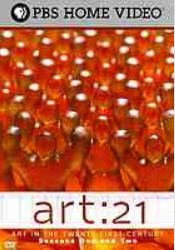In secondary sources, authors analyze and interpret primary source materials.
Secondary sources can be scholarly or popular. Scholarly sources (sometimes called "academic" or "peer-reviewed" sources) are written by and for experts and typically include bibliographies and citations. Popular sources are written for a general, non-expert audience and can be authored by anyone.
 Art 21: art in the twenty-first century
Art 21: art in the twenty-first century
Search Collins+Summit+Articles
Exhibition catalogues can be valuable resources for learning more about a particular artist and their work. These collections often include a mixture of primary and secondary sources such as: Artists' statements; Essays about the artists' work; Artists' biographies including exhibition and award history; Images of the artists' work.
For less well known artists, these catalogues may be one of the few sources of information available about their work.
How to Find:
There are several databases from which to choose when you are seeking secondary sources. For this assignment, most of you will want to start your search by looking at Art Full Text or a newspaper database (for items like exhibition reviews and commentary on the artist/work) or the Arts & Humanities Database (scholarly work in art and cultural studies, among other areas).